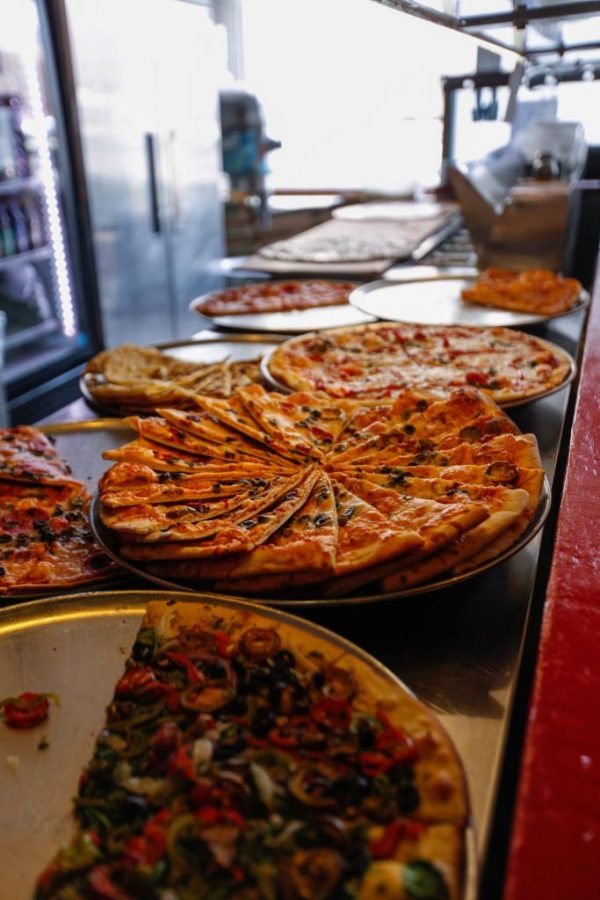For college students, it is easy to spend money on food. I have a knack for dropping a ridiculous amount of cash on beer and pizza every month — an unhealthy and pricey habit I am always trying to monitor. We all know the feeling of realizing you haven’t had a hot meal in a few days, and you find yourself caving in for something quick and satisfying. For me, this is a few slices shared with my boyfriend and a cold six-pack.
College is expensive and the food is not cheap. If you live on campus, the average student can expect to spend anywhere from $1,900 to $2,400 a semester on dining plans. Even if you are not living on campus, the mean amount young adults spend on food per week with a yearly income of $30,000 or less is $127. Millenials tend to spend a large part of their food money on dining out. Whether you regularly order delivery or go to your favorite restaurants, there are ways students can cut back and start saving their money without starving.
Track What You Spend
Take some time out of your day and record how much money you spend on food. This includes everything from your morning latte to the beer and side of fries you ordered. At the end of the month, add up how much you spent on food in total eating out and groceries. Is it a number you can live with? Don’t forget about those delivery apps and take-out. Just think about the extra cash you could save to pay credit card bills, loans or even stash away in your savings if you budget your monthly allowance for food.
[media-credit name=”Justin Prather” align=”alignnone” width=”300″] [/media-credit]
[/media-credit]
Speaking from experience, I started tracking my expenditures back in 2015. I record everything from everyday purchases to bills and rent. Every month I tally up the expenses and look at my income and how much I am spending. This allows me to reevaluate my spending habits so I can budget to put money aside in my savings. Each month, on average, I spend anywhere from $300 to $500 on food alone. That means I am spending between $60 and $100 on food every week. My two main food groups are beer and pizza, my Achilles’ heel. I love Este and The Pie, and I prefer drinking craft beer, which can cost a pretty penny, but I believe in quality, not quantity.
Make a Budget
After going over your spending habits for a month or even two, make a plan for how much you should spend on food each week. Break it down according to breakfast, lunch, dinner and snacks. Yes, you love that daily latte, but $5 almost five days a week adds up quick and could be about $125 a month out of your pocket. Snacks on campus can also be expensive; getting something to eat every day between classes can add up pretty fast. See if you can pack a lunch or buy snacks in bulk at a grocery store to cut back on costs.
Every week I keep in mind a ballpark figure of how much I know I should spend on food, including eating out and groceries. My goal each week is to try to cut my expenses and budget better than the month before. For example, if I know I am spending half of my weekly allowance for food on beer and pizza, I look at what kind of pizza I’m buying and how often, the same thing with beer. A bad week for me is when I’m spending about $40 or more on beer and pizza alone, leaving me with little cash left over for the groceries I actually need.
Stick To It
It may be hard at first to start tracking your expenses, giving yourself a budget and a weekly allowance, but doing these simple steps can help you build better habits and save money in the long run. Don’t feel discouraged if you do great for a couple months, then party hard and fail miserably the next. Nobody’s perfect — I’m certainly not. If you work hard at creating these habits, you can plan accordingly. Budgeting for a few months and saving that extra cash you usually spend on beer, pizza or lattes can go toward a trip to Las Vegas or even one huge party with all your friends.
Budget, Pay, Eat, Repeat
Having a budget does not mean no having fun. I still get my beer and pizza, it’s just a real celebration when I do. I get cheap beer and pizza more often to help cut back on spending, and I reward myself very rarely with a special night out for a few craft beers and delicious pizza, sometimes paired with a movie. I have learned to spend a certain amount on groceries for home and eating out each week. This helps me plan out my month and be aware of how much I expect to spend on food. After months of habit-forming practice, I have been able to put money away in my savings, regularly pay my bills and go on trips. It is not easy making a budget and following it. It takes practice, but with perseverance, this habit can change the way you live and eat.
a.hansen@dailyutahchronicle.com
@AHappyHansen



